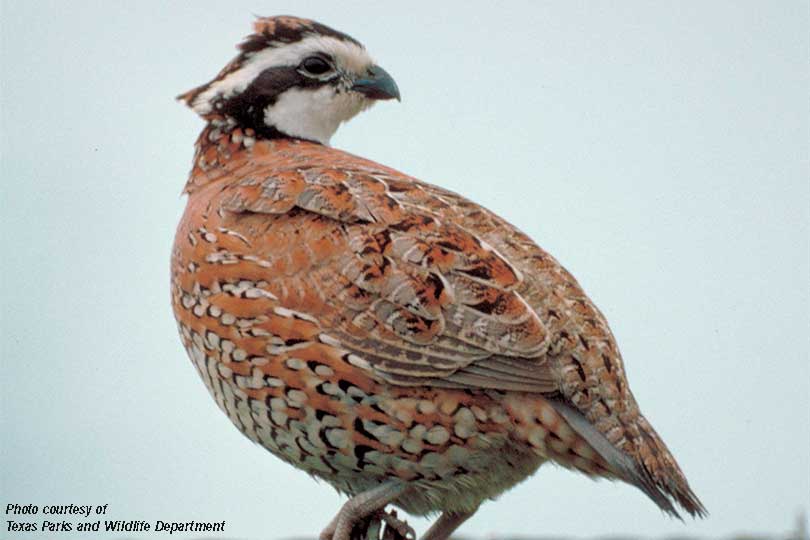By Gary Joiner
TFB Radio Network Manager
Observations by landowners and quail researchers indicate an average to slightly below-average quail forecast for the season that opens Oct. 26 statewide.
A team of individuals in quail areas of the state, led by Executive Director of the Rolling Plains Quail Research Ranch Dr. Dale Rollins, help produce a forecast for the season.
“Most of the reporters are what I call my quail trap line from across West Texas and South Texas. Probably the median score would be a four or a five (out of 10). So, most people are saying it’s going to be an average to slightly below-average year, pretty much on par with what 2013 was, coming out of the drought,” Rollins said in an interview with the Texas Farm Bureau Radio Network. “Some areas are notably better. I had some sevens and some eights, but the mode or the median, the mid-range, is going to be somewhere in that average to slightly below-average year.”
Weather is the big factor in determining quail populations and the quail forecast, Rollins said. The research ranch continues to try to better understand other factors like parasites and predation that may be operating beyond the “habitat-rainfall” paradigm.
“I typically say that we make or break a quail population here in West Texas with a June hatch. We had a decent per capita hatch. Our hens that were alive did a pretty good job, but we just entered 2019 with too few birds in the breeding population,” Rollins said. “We didn’t raise any in ’18, raised very few in ’17. So we’re dealing with a low capital, if you will, and it’s hard to get very much return on your investment if you have a low capital.”
Conditions on the research ranch in Fisher County, he said, have been good. But bird numbers are below what had been hoped.
“On a scale of one to 10, I’m giving the research ranch a three, and that may be gracious,” he said. “Most of us thought this year was going to be better than what it was. It was an El Niño spring, beautiful habitat conditions. I’m disappointed in the response that I’ve seen here on our place. We’re basically going to hang on to what birds we have or try to carry as many breeder birds into the next El Niño and, hopefully, see a nice rebound then.”
Several quail population survey techniques are used at the research ranch, including roadside counts in mid-September, to help determine the quail forecast.
“We drive two, 10-mile transects on the ranch. We drive them early morning and late afternoon. Literally, we have three counters in a vehicle. They keep moving at a pace of about 10 to 15 miles an hour,” he said. “We think those numbers are pretty comparable from year to year in terms of the technique. We’ve also tried that with helicopters flying on the ranch. We fly the ranch twice a year with helicopters, and we’ve found that our roadside counts are just as accurate at predicting our fall quail population as those helicopter counts are at a significant savings. It’s something that really anybody can do.”
It’s estimated that there are 40,000-50,000 quail hunters in Texas. Thirty years ago, that number would have been 300,000 hunters, Rollins said.
It’s been a steep decline in terms of quail hunting and quail hunting opportunities.
“A lot of good quail hunting is still left in Texas, but most of it is beyond the reach of the average person. People are paying high prices for good quail leases and so forth. Opportunity is one of the factors that’s affecting our ability to recruit new hunters,” Rollins said. “That’s something we’re going to have to address at some point.”
Quail season in all 254 Texas counties runs from Oct. 26 through Feb. 23, 2020.
For more information on the Rolling Plains Quail Research Ranch, visit www.quailresearch.org.


It’s habitat. A little common sense ( shorter season and lower bag limits ) would help a lot.